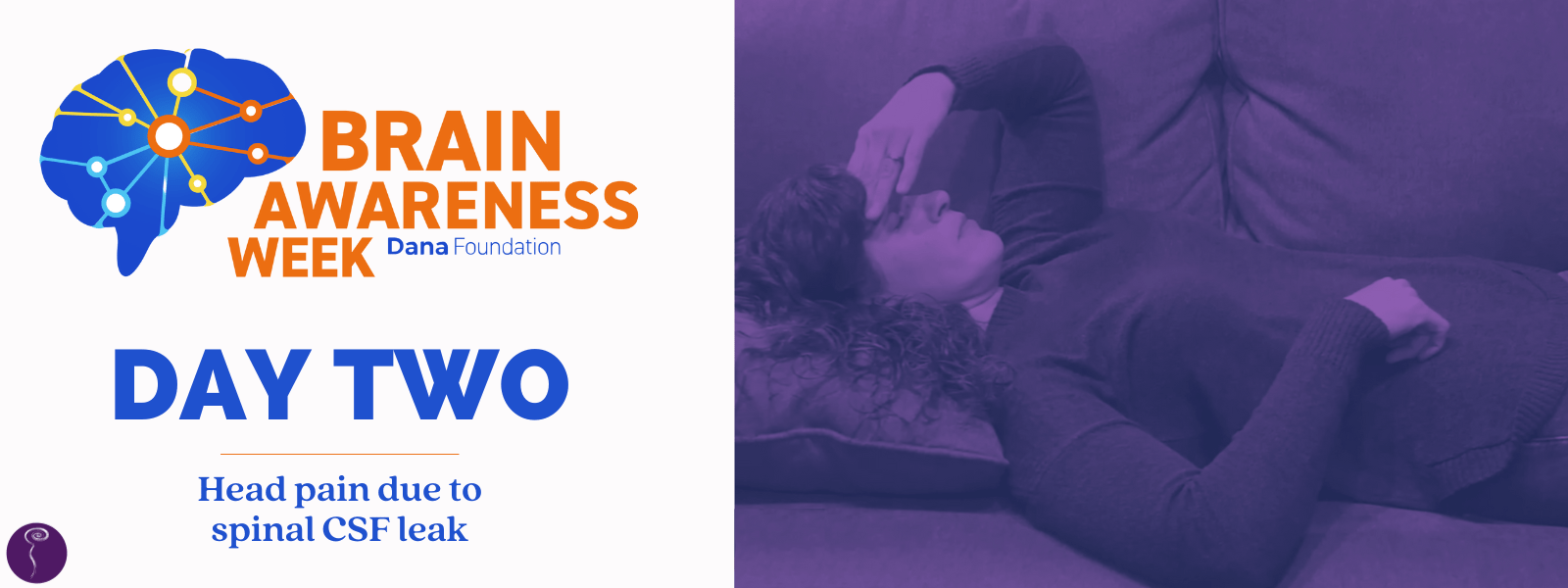
Head pain due to spinal CSF leak
For many people experiencing spinal cerebrospinal fluid (CSF) leak, the most prominent symptom is head pain that worsens when upright and improves when lying down. But some patients never experience this kind of orthostatic symptom. For still others, after some time, the pain loses its positional component.
- Alex’s head pain began as a nagging ache in the back of his head that intensified into pain that felt “knife-like.”
- Aiza had no head pain at first. Instead, she had tachycardia, a racing, irregular heartbeat that came out of nowhere. Eventually, she began experiencing daily headaches.
- Casey had lived with migraine for a decade, but suddenly experienced a “thunderclap” of intense head pain that he knew was different.
- Kathy only had pain in her head when she coughed, sneezed, or bent over.
- Patty experienced head pain while upright, but also extreme fatigue and a feeling of fullness in her ears.
- Alice’s near-constant head pain started after a sinus infection.
- Asia’s pain started with a twinge in her back, but quickly spread to include head pain that made her feel like her brain was being pulled down into her spine.
What all of these patients had in common was that their pain—however it presented—was due to a spinal CSF leak.
Common features and patterns of head pain due to a spinal CSF leak:
It is often positional
This means that within seconds, minutes, or hours of being upright, head pain will increase—and within minutes or hours of assuming a recumbent position, it will improve. Over time, this positional aspect can diminish and even disappear. Very occasionally, this positional aspect can be reversed, with some people feeling improved when upright. There are also cases in which people do not experience positional head pain at all.
It often has a distinct location
Most often, people report occipital (back of head) or suboccipital (lower aspect of back of head, at the base of skull) pain, but the pain may also be frontal, temporal, or diffuse.
The severity varies
The severity of the headache can vary from mild to severe—and in some cases is completely absent.
It can be accompanied by other symptoms
This includes neck stiffness, sensitivity to light, nausea (with or without vomiting), and sensitivity to noise.
It responds poorly to migraine medications
A hallmark of spinal CSF leak head pain is that it does not tend to respond to medications normally used to treat migraine. Indeed, this should be a clue that a diagnosis of migraine is incorrect.
Further reading:
For more information on spinal CSF leak symptoms, please visit our symptoms page.
To read or watch the patient stories mentioned above, please visit the following links:

